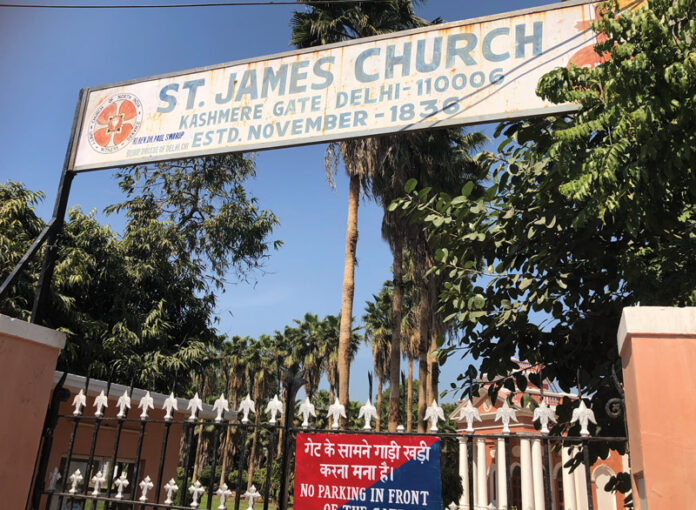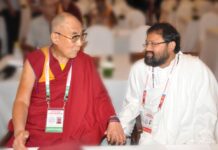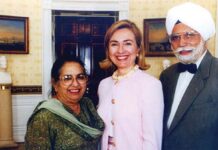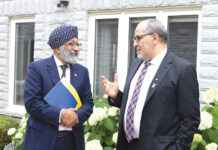
SYNDEY (Nova Scotia): Visiting Nova Scotia (New Scotland) earlier this year was such an educative experience for me in terms of history.
When I read that this beautiful province of Canada was the ONLY place in the world that Scotland could ever colonise (even though they had small settlements in New Jersey, Georgia and Carolina), my mind went back to my readings of Scotland’s links to India.
Scotland tried imitating the success of the East India Company at empire-building by creating their own Company of Scotland and seize the area around today’s Panama Canal in 1698 to set up.a trading colony by the name of New Caledonia. But disease and rivalry by the Spanish led to the collapse of the plan.
This failure cost Scotland one-third to a quarter of its wealth (£400,000) invested in the company and about 2,000 lives.
This happened when the deeply Protestant England had just deposed King James II (also King of Scotland as James VII) for being Catholic, and put his daughter Mary II and her Dutch husband William on the throne as Protestant co-monarchs in 1688. [Under the union of crowns,
Scotland and England had been sharing the same monarch since 1603 when Queen Elizabeth I of England died unmarried and childless and the English crown passed to her nearest heir, her cousin James VI, King of Scotland.]
In 1702 when Mary II died and her sister Anne became Queen, she decided to merge England and Scotland.
So when Scotland went bankrupt after its Panama mission, England bailed Scotland outby bargaining with the Scots to sign the 1707 Union Treaty. That’s how Scotland joined England to make it Great Britain.
But there was opposition to this union in Scotland. Also England’s deposition of King James II led his supporters, the Jacobites, to unleash a rebellion in Scotland to regain the throne for the House of Stuart.
Here India helped England keep Scotland. The then Prime Minister Sir Robert Walpole used East India Company patronage to appease Scots to check opposition to the political union in Scotland.
Author George K McGilvary says in his “The Scottish Connection with India, 1725-1833” that England virtually bribed the Scots at that point in history.
“It was to be bribery, but there were few lay or ecclesiastical preferments in Scotland to spread around. Only the abundance of EIC (East India Company) favours saved the day” for England.
Beginning immediately after their 1707 union with England, Scots started landing in India in huge numbers to serve as administrators and soldiers of the East India Company and as teachers, planters, traders and missionaries.
Interestingly, it was a Scottish surgeon – William Hamilton – who paved the way for the establishment of the British empire in India.
In 1715, Hamilton went to Delhi with an East Indian Company delegation from Bengal to meet India’s Mughal emperor Farrukhsiyar to seek trade-related concessions.
But the Mughal emperor had health issues related to groin swelling. Hamilton cured him and, in exchange, got all the concessions for the East India Company – to trade freely in Bengal and buy 38 villages around its Fort William headquarters in Bengal to built Calcutta (now called Kolkata).
Another Scotsman Alexander Grant played a crucial role in the Battle of Plassey on June 23, 1757, when Robert Clive-led EIC forces defeated the Bengal ruler Siraj ud-Daulah, marking the foundation of the British empire in India.
Every ambitious Scot wanted to rush to India at that time.
So much so that the then most powerful Scottish politician Henry Dundas, whose advocacy of the expansion of the British empire and his disputed role in the slave trade have become controversial topics in Canada and Britain today, was accused of sending too many fellow Scots to India to further his political goals in Scotland. Dundas was on the board of the East India Company in London.
So many of them arrived in India that by 1771 nearly a half of the East India Company’s writers were Scots.
Even one Scotchman George Bogle wrote back home from Calcutta in 1771, “There are now so many of my countrymen here that I am, every now and then, meeting with an old acquaintance”.
Not surprisingly, the first three governors general of the East India Company from 1773 to 1793 were of Scottish origin – Warren Hastings, Sir John Macpherson and Lord Cornwallis. In all, six Scotsmen served as the governors general and viceroys of India.
Years later in 1821, the great Scottish author Sir Walter Scott wrote to call India “…the corn chest for Scotland where we poor gentry must send our youngest sons as we send our black cattle to the South.”
Speaking in a similar vein, British politician Sir Charles Dilke said in 1868 that “from Dunedin to Bombay, for every Englishman that you meet who has worked himself to wealth from small beginnings without external aid, you find ten Scotchmen. It is strange, indeed, that Scotland has not become the popular term for the United Kingdom.”
Scotland benefited immensely from the British empire in India. And Scottish missionaries played a huge role in spreading Christianity and English education in India. Many Scottish-linked educational institutions are among the best in India today.
Many Scots inter-married with Indians and there are numerous Anglo-Indians with their ancestry linked to Scotland.
Interestingly, the famous Col. James Skinner (1778 – 1841) was the product of such mixed marriages. His father was a Scottish officer in the East India Company and his mother was from Bihar.
Called Sikander Sahib, Col. Skinner was instrumental in Col. James Skinner (1778 – 1841) was the product of such mixed marriages. His father was a Scottish officer in the East India Company and his mother was from Bihar. His Skinner’s Horse is today a regiment of the Armoured Corps of the Indian Army.
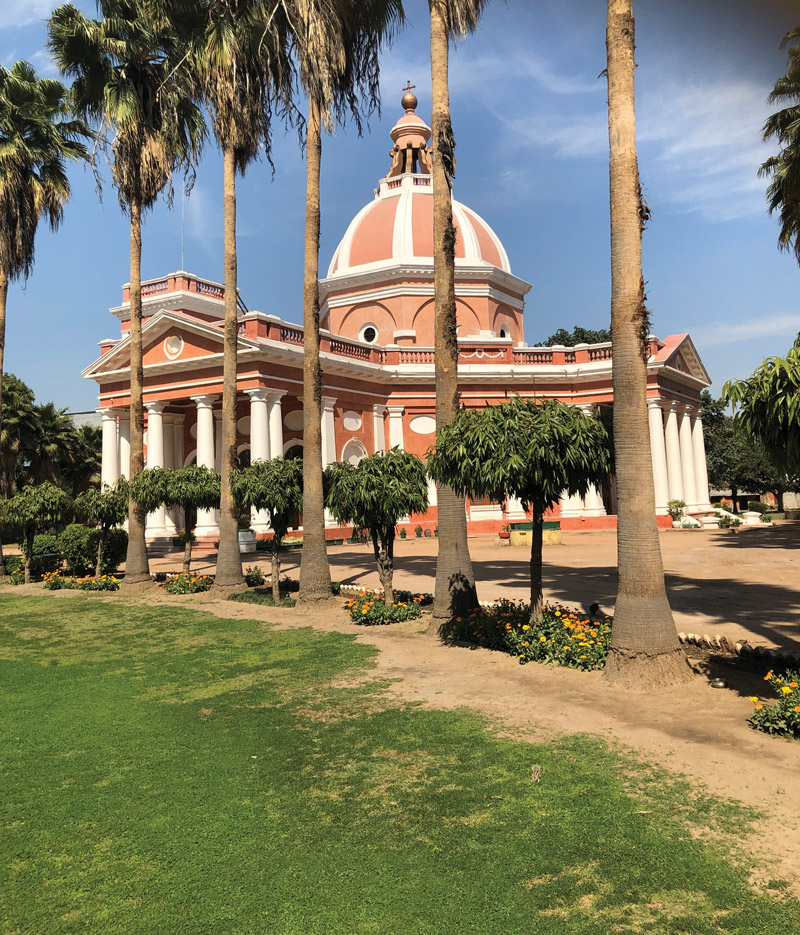
For his services, he was made a Commander of the British Empire (CBE).
Col. Skinner also built north India’s first church (St. James’ Church) near Kashmiri Gate in old Delhi in 1836. Also known as Skinner’s Church, it became the official church of the British viceroy in India. He is buried in this chruch.
I visited this church in March and found it very well maintained. Col Skinner lived royally on his five-acre estate not far from this church. His descendants lived there till India’s independence in 1947 and later vacated it. Today, there are hardly any traces of this estate as it was torn down to make way for godowns and residences.
Col Skinner had many Hindu and Muslim wives/mistresses. He was also known for his mastery of the Persian language which was the court language during Mughal rule in India.
During Col Skinner’s time, another Scotsman Lord Macaulay (whose father was a Scottish Highlander), recommended the introduction of the English language as the medium of instruction in secondary schools in 1835, enabling the colonists to tighten their grip on India.
The 1857 mutiny by Indian soldiers would have ended the East India Company enterprise in India, but Scottish army commander Sir Colin Campbell saved the day for Britain by crushing the rebellion. He was later appointed Army Commander-in-Chief of India.
In 1885, it was another Scotsman Allan Octavian Hume who sowed the seeds of Indian nationalism by setting up the Indian National Congress which later fought for India’s independence under Gandhi, ruled independent India for decades and is the major opposition party today.
So much for Scotland’s connections to India.
And not to forget that Scotchs are the favourite whiskies of most upper and middle class Indians today!

